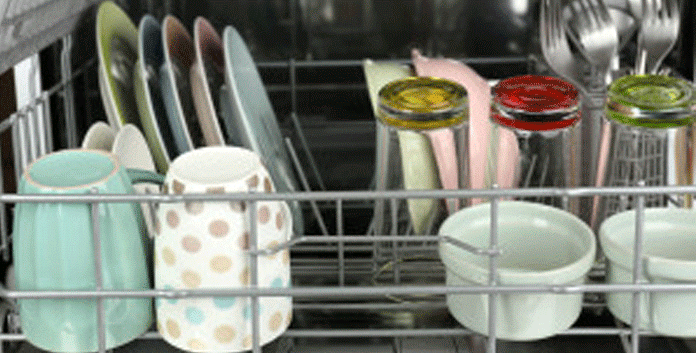
Submitted questions will be posted with my response by the following Tuesday or before.
Submitted comments will be moderated and approved within 24 hours.
Latex: Synthetic, Natural, Organic—Dunlop and Talalay
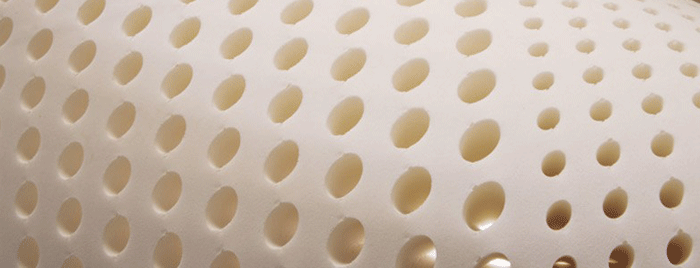
Question from Donna
Hi Debra,
I own three Savvy Rest mattresses (twin, full, and king) all made from Talalay latex as I prefer how that feels. You mention that Talalay is petroleum-based. Is that correct? Savvy Rest lists both Talalay and Dunlop as natural latex. Yikes! I’m pretty worried now that I have petroleum based latex in three very expensive beds.
Debra’s Answer
I did say that Talalay latex is petroleum-based. When you asked this question, I went back and took another look at latex and want to be more specific.
Latex foam used in mattresses can be confusing, so I’m going to sort it all out clearly here.
There are a lot of details about how latex is made, but in this post I am just going to focus on types of latex, what they are and how they are labeled.
There are two parts to understanding latex
1. the source of the latex
2. the process used to turn the latex into foam
Sources of Latex
The raw material to make latex foam for mattresses and furniture are are
1. crude oil
2. sap of the rubber tree Heaven brasilliensis
Latex made from petroleum is called “synthetic”. The most common type of synthetic latex is SBR (styrene-butadiene rubber). Yes, styrene like Styrofoam cups, which leach styrene into beverages. Synthetic latex as a stronger odor than natural latex and usually does not mean emissions standards of testing organizations such as Oeko-Tex and Greenguard.
Synthetic latex is often mixed with natural latex and marketed as “blended.” But it’s not half and half. Usually blended latex is mostly synthetic with a small amount of natural latex.
 Natural latex is made from the sap of the rubber tree. The sap is “tapped” from rubber trees much in the way maple syrup is tapped from maple trees.
Natural latex is made from the sap of the rubber tree. The sap is “tapped” from rubber trees much in the way maple syrup is tapped from maple trees.
There are two types of natural latex:
1. natural latex
2. organic latex
While both come from the rubber tree, natural latex may have various chemicals used in the growing or processing of the sap, which are mostly unknown.
Organic latex sap is certified to usual organic standards.
So there are basically three raw materials:
1. synthetic SBR latex
2. natural latex sap
3. organic latex sap
Processes to Turn Latex into Foam
There are two basic processes
1. Dunlop
2. Talalay
Dunlop was the original process used to make latex and is simpler than Talalay.
Read a comparison of Dunlop and Talalay here
From the viewpoint of choosing the least toxic latex, these processing methods don’t seem to make much difference. The most important aspect of choosing a nontoxic latex is the raw material.
In the marketplace you’ll find:
* synthetic latex made with Dunlop or Talalay.
* natural latex mostly Dunlop, with some Talalay
* organic latex is all Dunlop at this time (but that may change as more organic latex becomes available)
If it’s organic, it’s Dunlop. But if it’s Dunlop, it could be synthetic, natural or organic.
 What to Look For
What to Look For
The bottom line here really is if you want the most natural and nontoxic latex, choose organic.
Organic latex is certified by the Global Organic Latex Standard (GOLS).
The Original Question
Now to answer the original question: “You said Talalay is petroleum-based. Is that correct? Savvy Rest lists both Talalay and Dunlop as natural latex.”
It turns out I was both right and wrong in saying Talalay is petroleum-based. Some Talalay latex foam is petroleum-based and some is natural latex. But today, Talalay is never organic.
So what about Savvy Rest? Here’s what I found on their website today:
True natural latex, without synthetic latex or fillers blended in, is simply natural foam rubber. We offer two different types of natural latex: Dunlop and Talalay. Dunlop, named after the method in which it’s manufactured, is the denser, more supportive of the two. Talalay, also named after its manufacturing process, offers softness and gentle pressure-relief. (Learn more about Dunlop and Talalay here.)
Our natural Dunlop latex is certified organic in two ways. The rubber tree plantations are certified organic according to USDA standards, and its processing is certified organic to the Global Organic Latex Standard (GOLS).
So I would presume from this that your Talalay latex is natural, but not organic. And clearly not synthetic.
CONSUMER REPORTS: Organic Mattress Labels You Can Trust
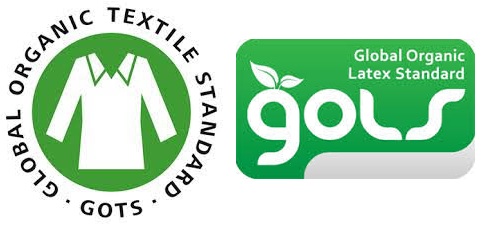
Consumer Reports has a great review of the certification labels used on organic mattresses. I was thinking I wanted to write a report like this, and then found this one.
According to their research only two certification meet their qualifications:
- Global Organic Textile Standard (GOTS)
- Global Organic Latex Standard (GOLS)
I agree. These are the certifications to look for in an organic mattress.
Here is what each of these certifications mean:
GOTS requires that at least 95 percent of the materials in the mattress be certified organic, and it prohibits outright the use of certain substances even for the other 5 percent, such as chemical flame retardants and polyurethane, the chief ingredient of memory foam.
GOLS ensures that a mattress with latex is made of organic latex, with restrictions on the other 5 percent of the mattress’s components. Natural-latex mattresses may have both the GOTS and GOLS labels.
[CORRECTION:I need to correct Consumer Reports here. GOTS does not require that at least 95% of the total materials in the mattress be certified organic. GOTS recognizes that other materials in addition to fibers are needed to make mattresses. GOTS divides the materials into two “piles”—one is the certified organic fiber and the other is the other materials needed to make the mattress. The 95% applies to the pile of fibers only. The requirement is that 95% of the fiber used in mattresses must be certified organic.]
In addition, GOTS does allow polyurethane as part of the mattress’s componets, in the 5% that is not organic fibers. This is clearly and specifically stated in the GOTS Standard 5.0, Section 2.4.9.1-d. This is specifically allowed as an “accessory” material that provides needed funcitionality, in this case waterproofing.]
Their review also explains the meaning of other certifications in simple terms.
They point out that Oeko-Tex Standard 100 doesn’t ensure that the fiber used in the mattress is produced organic all, but only sets limits for emissions of a list of harmful chemicals.
And they also explain why five other certifications you might see on a mattress have limited value.
Nontoxic Dishwasher Cleaner
Question from Bonnie
Hi Debra,
My parents are is their 80’s and can not smell anything. There was a strong cleaner smell in their kitchen – I found out it was cascade pod cleaners. Is there a nontoxic brand you know of?
Thank you.
Debra’s Answer
Readers, we’re not talking about dishwasher detergent here.
The question is about dishwasher cleaner. a product that removes limescale buildup, grease, and odors from your dishwasher.
I’m not aware of any nontoxic version of this product. And I haven’t had a dishwasher for more than 40 years, so I don’t have a solution from experience.
Readers. any recommendations?
Harvard Study Shows Pesticides in Food Cut Sperm Count in Men by Half

From the study:
Total fruit and vegetable intake was unrelated to semen quality parameters.
High pesticide residue fruit and vegetable intake, however, was associated with poorer semen quality.
On average, men in highest quartile of high pesticide residue fruit and vegetable intake (≥1.5 servings/day) had 49% (95% confidence interval (CI): 31%, 63%) lower total sperm count and 32% (95% CI: 7%, 58%) lower percentage of morphologically normal sperm than men in the lowest quartile of intake (
Low-to-moderate pesticide residue fruit and vegetable intake was associated with a higher percentage of morphologically normal sperm (P, trend = 0.04).
Eating lots of fruits and vegetables are not a problem.
Eating a lot of fruits and vegetables with pesticides greatly reduce sperm counts.
Lead-free Pottery Bowls

Question from Julia
Hi Debra,
I have been making these delicious bowls with rice, veggies, etc. I want to get pasta like bowls that are lead free. What do you suggest?
Debra’s Answer
Yes I understand, I have been making “bowls” too and I love them so much that practically every meal I eat is in a bowl!
A couple of months ago I went shopping at Crate & Barrel and found some oversize bowls that I love and use for almost every meal.
And then I found some smaller bowls I had stashed away from Pier One. I had purchased these almost 15 years ago, so I doubt they still sell the same bowls, but they probably have something similar.
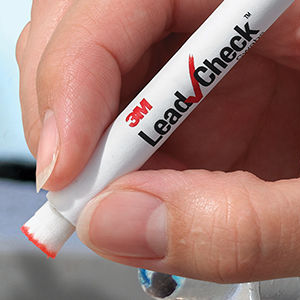 My rule of thumb has been to assume white bowls are safe and to check colored dinnerware with LeadCheck swabs. These are not considered as reliable as other forms of testing, but they are affordable and available. You can get them at any Home Depot or online.
My rule of thumb has been to assume white bowls are safe and to check colored dinnerware with LeadCheck swabs. These are not considered as reliable as other forms of testing, but they are affordable and available. You can get them at any Home Depot or online.
LeadCheck swabs are simple to use. You just rub the end of the swab against the bowl for thirty seconds and if there is lead the swab will show red. If no lead, the swab will remain white. These swabs now come in packs of 2 for about $10, so it’s more affordable to do these tests than in the past.
I used LeadCheck swabs to test two bowls that I have on my shelf and eat from every day. As I thought, they both tested negative for lead.
 |
|
| This bowl from Pier 1 is a salad or soup sized porcelain bowl. Here is a similar one from Pier 1 Imports and they come in several sizes. Note this one is made in China but still tests negative for lead. | This larger porcelain bowl from Crate & Barrel is a serving bowl. It’s called Essential Serving Bowl. It was in stock at my local Crate and Barrel store. This also comes in several sizes. Note this one is made in Indonesia and also tests negative for lead. |
I’ve become fond of putting my food in big white bowls and am actually retiring a lot of my dinnerware because I just don’t use it. White bowls are very simple and easily hold everything I eat.
I suggest purchasing white bowls and LeadCheck swabs and then bring the bowls home and test them immediately. If the swabs turn red, return the bowls and buy other bowls until you find bowls that test negative.
Here’s an article from the Chicago Tribune from 2007, when they gathered 20+ pieces of colorful dinnerware from local stores and had them tested for lead. None showed significant amounts of lead.
Many years ago I did a LeadCheck swab test on a colorful painted dinner plate for a TV show in Washington DC. And the swab did turn red right on cue. So I’ve seen the swabs test positive and negative. Mostly negative.
Is Real Salt Radioactive?

Question from Kathleen S.
Hi Debra,
My understanding of Real Salt is that it was mined in an area where nuclear testing had been done. My chiropractor said she would never use it, but recommend Celtic Salt. I read that Himalayan salt has problems too. So it seems very difficult to find any thing safe.
Debra’s Answer
I’ve done extensive research on salt and came to the conclusion that safest salts are those that come from underground sources. These are ancient sea beds that are not contaminated with modern pollution. So that would be Real Salt and The Original Himalayan Salt.
While I ate Celtic Salt for many years, I no longer eat any salts that come from the sea due to extensive pollution of sea water. Celtic Salt and some other salts are harvested from pristine areas and so are better than other sea salts, but underground salts are protected from modern pollution.
Here’s a response from Real Salt about your radiation question. Please share it with your chiropractor. “Nuclear tests were done in Nevada (not Utah) in the 1950’s, but it in terms of nuclear protection (time, distance, shielding), there is no possible contamination of our Real Salt.”
http://realsalt.com/real-salt-radiation/
Antimicrobials in Polyurethane Foam Used in Mattresses and Upholstered Furniture
 Often when I am researching one chemical or product I will get clues about other chemicals in products.
Often when I am researching one chemical or product I will get clues about other chemicals in products.
And so it was that I came across a mention of “antimicrobials in polyurethane foam” and so of course I had to go find out which antimicrobials are used in polyurethane foam.
And it took me about two minutes to find this:
www.ultra-fresh.com/antimicrobial-applications/foams
It’s the antimicrobial used in polyurethane foams. And they specifically boast they are “a proud supporter of CertiPUR-USA“.
It’s “US EPA registered, BPD compliant and Oeko-Tex listed,”
US EPA registered means it’s a registered pesticide. Here’s their EPA Registration
www3.epa.gov/pesticides/chem_search/ppls/010466-00028-20050927.pdf
WARNING
UItra-Fresh*DM-50, as received in its concentrated form, is a potentially dangerous material and should be handled with the care and common sense that be accorded to all biologically active • ( Ultra-Fresh”‘DM-50 – IDS Page 4 of4 March 1998 chemicals. Ultra-Fresb*DM-50 is corrosive to eyes and exposure.can cause skin irritation. May be fatal if swallowed. DQ not get in eyes, on skin, ~r on clothing. Wear goggles or faces shield and rubber gloves when handling. Avoid contamination offood. Treated effluent should not be discharged where it will drain into lakes, streams, ponds, or public water.
This is stamped ACCEPTED by the EPA, but nowhere does it say what the chemical is!
BPD compliant means it meets the requirements of the Biocidal Products Directive (BPD) which is a European Union directive regarding the placing of biocidal products on the market.
Oeko-Tex listed. It actually is Oeko-Tex listed, right here on this page:
OEKO-TEX Products with Biological Activity
It’s part of a group of active chemical products “which have been inspected by independent toxicologists and assessed as harmless to human health when used as indicated and intended. The safety assessments are based on information, test reports, recipes etc. which have been provided by the manufacturer for the product in question. The test reports taken into consideration for this assessment have been drawn up by accredited toxicological and/or dermatological institutes.”
The active chemicals products approved on the OEKO-TEX® list are in line with the latest European regulations, specifically with the Article 95 list of Biocidal Products Regulation No. 528.
In addition to Products with Biological Activity, other active chemical products are fiber materials with flame retardant properties and a list of accepted polymers without assessment which includes polyvinyl chloride.
I’m not sure this standard means anything at all. If all they are doing is certifying the materials meet government standards, then all products obeying the law would qualify. This isn’t the same standard as their Standard 100 for textiles.
Here’s a specification sheet for the antimicrobial that gives this warning:
Ultra-Fresh* Antimicrobial Additive is flammable. Keep away from heat, sparks and open flame. Use with adequate ventilation. May cause eye and skin irritation. Do not breathe vapour or spray. Wear suitable protective clothing such as gloves and eye and face protection,
And here is the MSDS
The MSDS reports a chemical in the Chemical Family Isothiazolinone and the listed ingredient is
2-N-Octyl-4-isothiazolin-3-one. And it turns out to be an antimicrobial that has very widespread use in a lot of consumer products. One of them being mildewcide in latex paint.
There is much concern about allergic contact dermatitis with this chemicals. Here is a summary of scientific studies about 2-N-Octyl-4-isothiazolin-3-one
Another Isothiazolinone, called Methylisothiazolinone (MIT) is known to be allergenic and cytotoxic, which has brought it to the attention of the European Union There the rate of people allergic to it is skyrocketing.
Here’s the Ultra-fresh entry the the Pesticide Action Network Pesticide Database.
Here it’s considered a “bad actor” product and says the active ingredient is Thiabendazole, which they identify as a carcinogen and a developmental or reproductive toxin.
Antimicrobials are designed to kill very tiny organisms. How can this be safe for humans? Our bodies are full of microorganisms.
What we know now is that there are antimicrobials in polyurethane foam and their safety is questionable.
Thoughts on Earth Day 2017
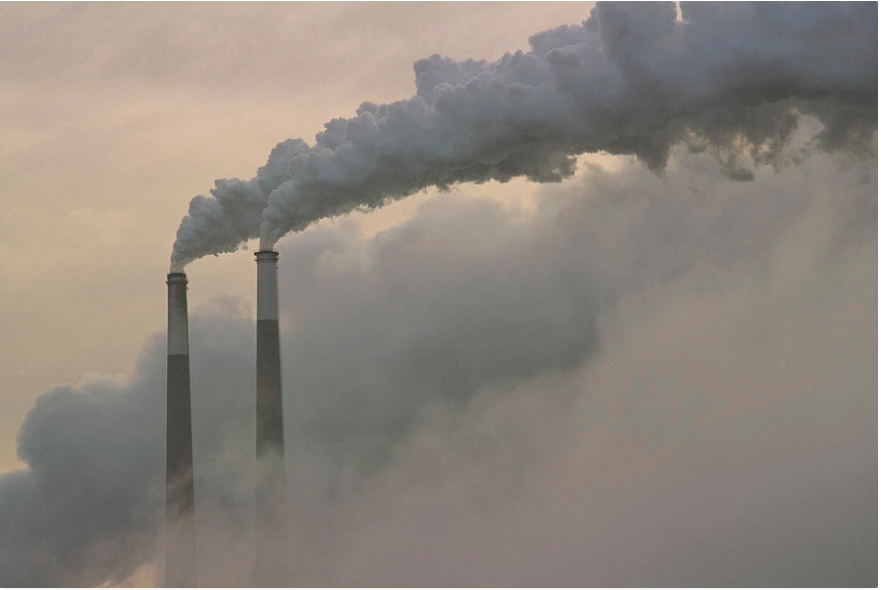 PHOTO CREDIT: Smoke Stacks Upper Ohio River by Gerry Ellis
PHOTO CREDIT: Smoke Stacks Upper Ohio River by Gerry Ellis
I first became aware of the “environment” in 1987. How that occurred is a whole story in itself, but
the result was that suddenly I became aware that the products I used every day not only could affect my health, but they could also affect the environment. And I began to explore this idea in a small newsletter printed on recycled paper called The Earthwise Consumer.
This was three years before “green” exploded in 1990 with the 20th anniversary of Earth Day and a little runaway bestselling book called 50 Simple Things You Can Do to Save the Earth. I happened to be there the day it was released. My booth was right next to theirs at some expo.
I wrote about both the health and environmental effects of consumer products for some years. The New York Times even called me “The Queen of Green.” But I came to a point where push came to shove and I decided I couldn’t consider everything. And I chose to go back to my roots and specialize in toxics. Because the green movement seemed not to be interested in toxics and health (green, after all, is about the environment), and someone needed to do this.
But more importantly, from my viewpoint, toxics is the most important environmental issue there is.
The whole environmental movement started because Rachel Carson wrote Silent Spring, which is about the poisoning of the environment by pesticides. The Environmental Protection Agency (EPA) was founded to protect the environment (not people) from toxics.
But our government doesn’t have a People Protection Agency (so I have to at least identify the toxic chemicals, find out where they are in consumer products, find the products that are free of these toxic chemicals, and make this known to the world so people who want to protect themselves and their loved ones from toxic exposures can have a choice).
If you’ve ever taken an airplane flight you have heard the stewardess say, “Put on your own oxygen mask first,” and then help others. Because without helping yourself and being healthy and able, you cannot help others.
And so for me, I decided to help get all the people of the world healthy first. Then we can help the environment. But as it turns out, every time each one of us makes the decision to not use a toxic product to help our own health, it also helps the environment.
On Easter morning I was thinking about what to write today, and I thought about a problem I’ve had for a number of years. The problem is how do I describe what I am working for without describing it as a negative. “Toxic-free” starts with the problem of toxics and says. “No. No toxics.” OK. A world without toxics.” What is that? What does it look like? What are we reaching for?
In the time it took for me to write this question in my journal, I had the answer.
Though I have a lot of attention on removing toxics from our homes and the marketplace of consumer products, that’s not what I’m really doing.
In my own mind and heart, I am aware of what I call “the world of Nature.” also known as “the environment.” For me, it’s a living, breathing, amazing ecosystem that once was pristine and now has been polluted by human activities.
So when I think of ‘toxic free” it’s a picture of our living planet, which includes all life processes and species, including us homo sapiens, without all the pollution. It’s a picture of us all belonging to this incredible system of life and supporting it with our actions instead of harming it. That’s what I’m reaching for. That’s what I’m imagining. That’s what I want in my heart of hearts.
The first step in healing from a poisoning is “remove the poison.” When we live toxic free, what we’re restoring is life. Our own human lives and life as a whole.

Sustainable Fashion?
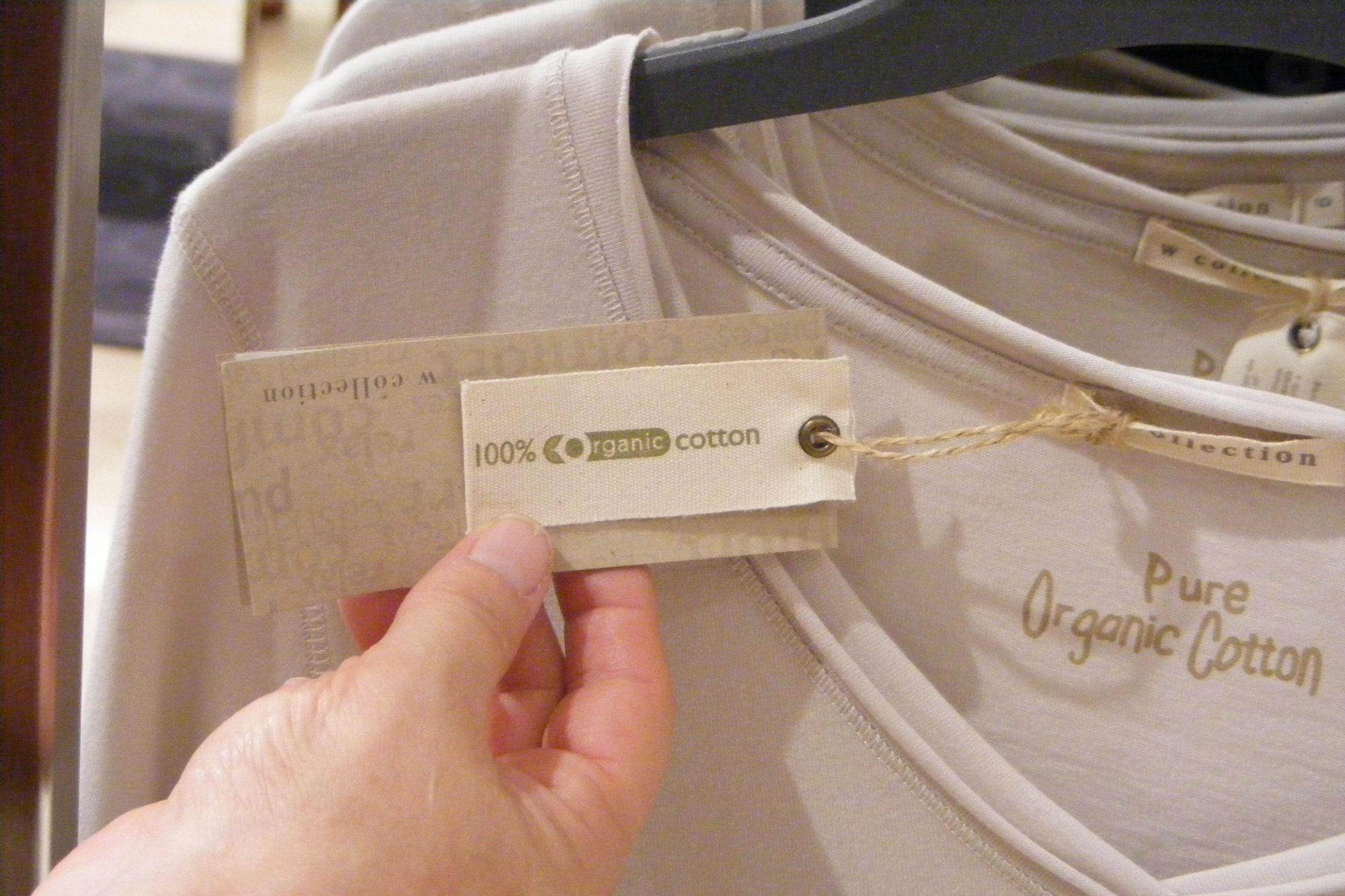
An article from the UK newspaper The Guardian last week reported on a partnership between the World Wildlife Fund (WWF) , the world’s largest conservation organization, and an London-based fashion community AwaytoMars to create “the world’s first 100% sustainable clothing line.”
The clothes will be made of a “newly designed” cotton fibre called Infinifed Fiber “that can be recycled an infinite number of times and which won’t, in theory, wear out.”
I couldn’t find more than that one page about this fiber, and no photos whatsoever, so I’m not sure if this is real or theoretical.
But I do know something about recycling paper, which is a similar process since it is recycling a natural cellulose material. You can’t infinitely recycle the same paper. You use a little material every time you recycle it. You have to keep adding new paper to mix with the old paper. Here’s a whole article about Why cotton is so difficult to recycle—and how clothing retailers hope to change that.
And I know something about making new fibers from cellulose. This is done every day. It’s called “rayon.” And you can’t recycle cellulose into fiber without a lot of chemicals. (Here’s another company also attempting to do this: Evrnu.
But here’s the bigger problem with this: it’s not sustainability.
Sustainability is about sustaining the life systems of planet Earth.
It’s about using the renewable resources that have been designed by Nature, in amounts that can be sustained by the system. Organic cotton is a perfect example of sustainability. You grow the cotton organically, and theoretically you could put that cotton right back into the field at the end of it’s useful life and it would regenerate the soil. That’s what a tree does. It pulls from the environment to make leaves, then drops it’s leaves back into the environment to restore the environment.
We should be supporting organic agriculture, not inventing new manmade processes.
Sustainability is also about not poisoning the system with toxic chemicals. Every time each one of us make a toxic-free choice, we are not only protecting our own health, we are also helping the environment.
Papa John’s Pizza Goes (a little bit) Organic
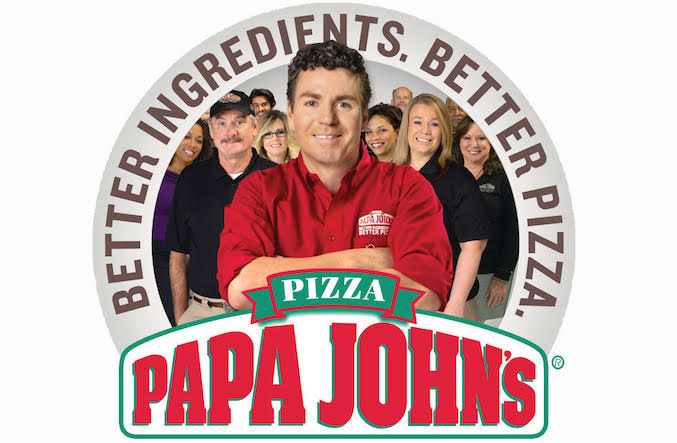
Pizza with a few organic ingredients isn’t new or unusual (type “organic pizza” into your favorite search engine and you’ll probably find a local pizzeria that has organic ingredients—I found one right close to me here in Florida with organic tomatoes and local ingredients).
But the news here is that Papa John’s— a chain pizza corporation—is doing an organic pilot program using organic Roma tomatoes, mushrooms, green peppers, and yellow onions.
It’s a step in the right direction.
Organic blogger Max Goldberg thinks this is important and significant.
Read his interview with Papa John’s Chief Ingredient Officer (that’s really his title).
LIVING MAXWELL: Papa John’s Pizza Makes the Decision to Go Organic — Why This is So Important

